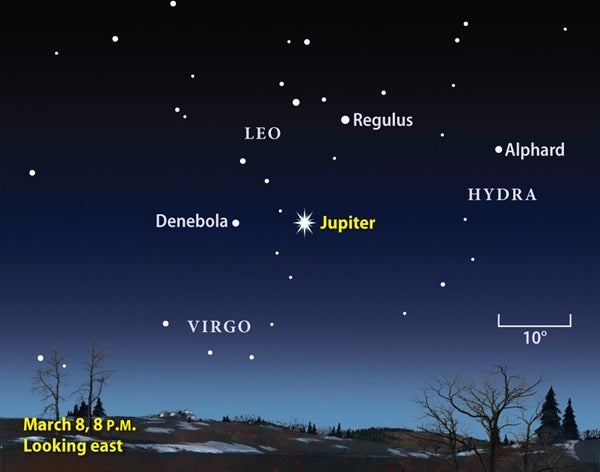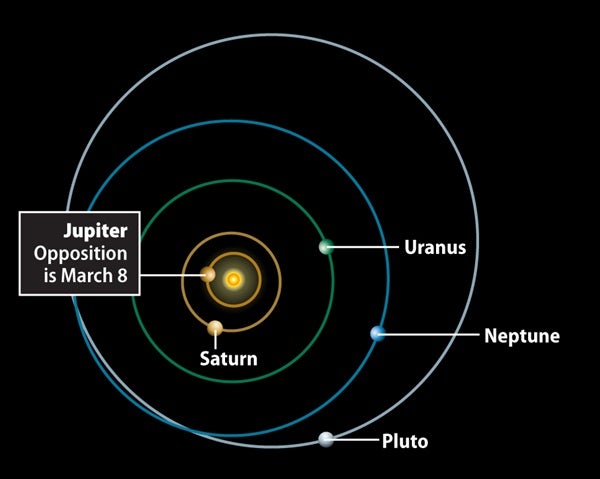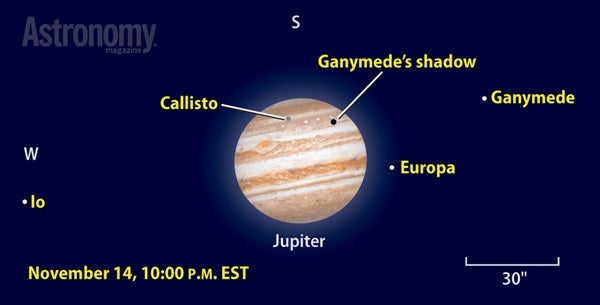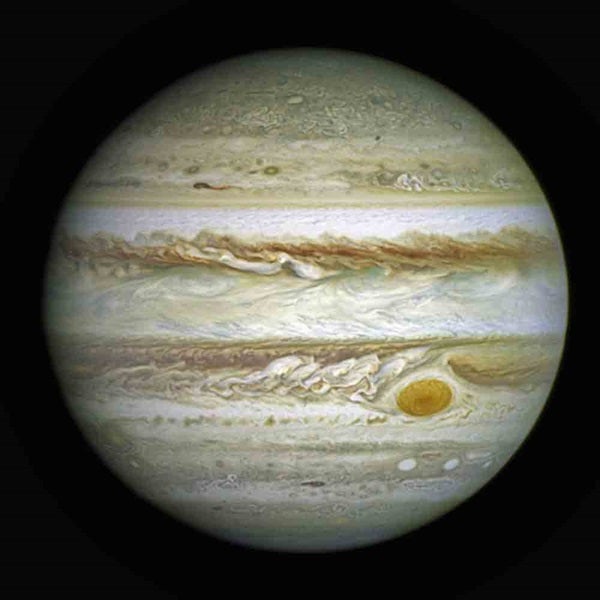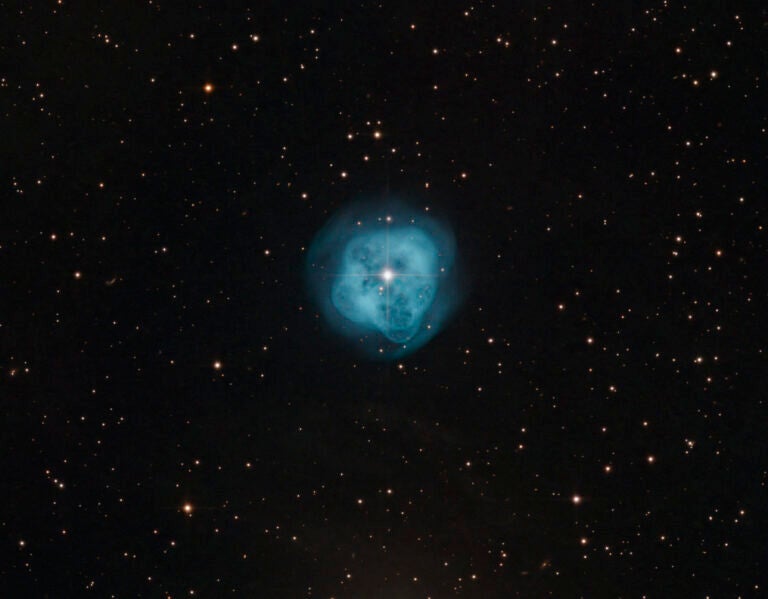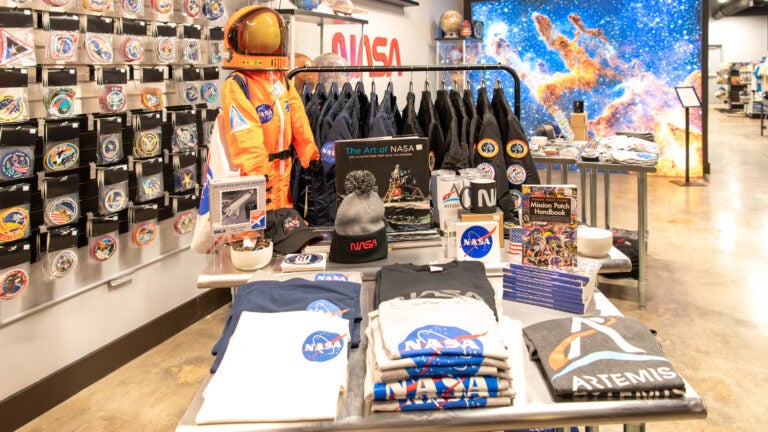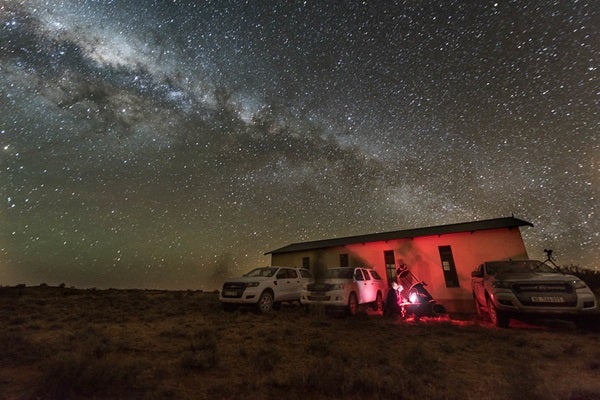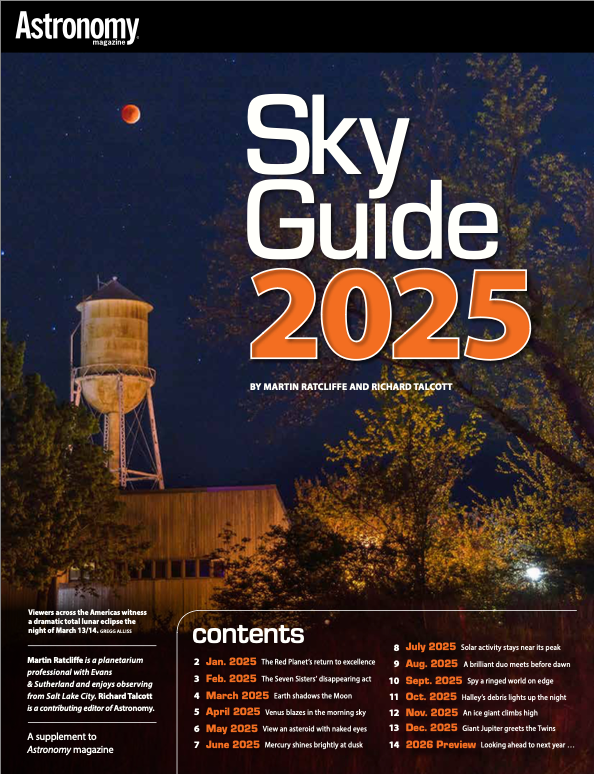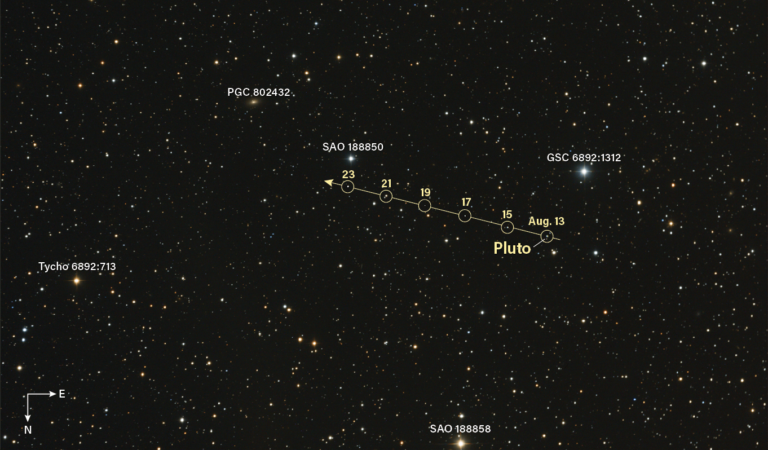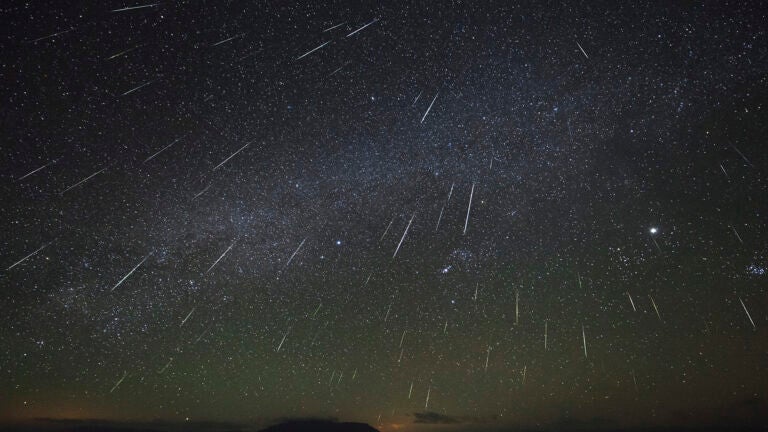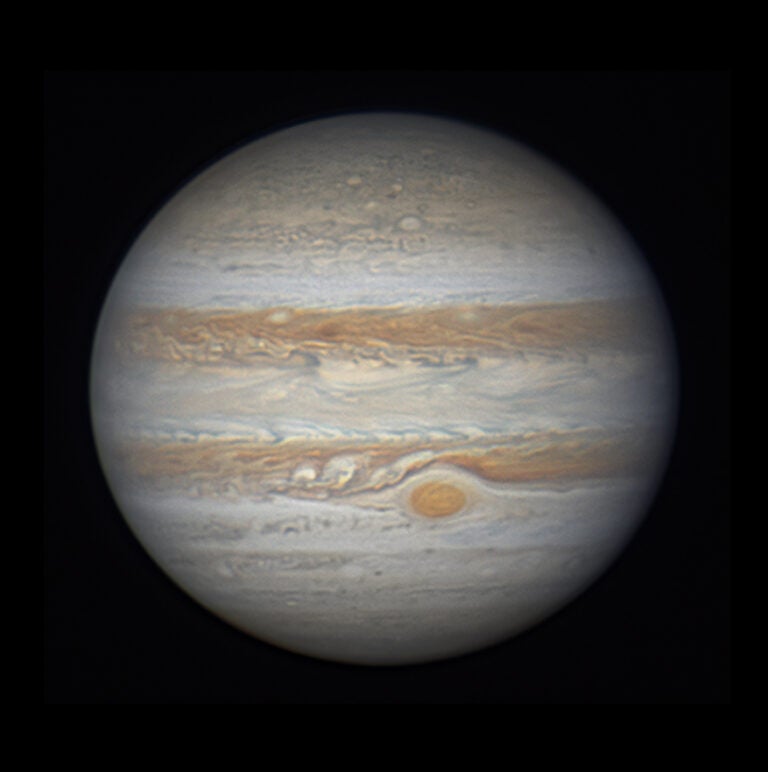Jupiter reaches opposition and peak visibility March 8. Because the planet lies opposite the Sun in our sky, it rises at sunset and sets at dawn. The planet also shines brightest at opposition. At magnitude –2.5, it appears 2.5 times more luminous than the night sky’s brightest star, Sirius. Jupiter spends March in southern Leo, and within 1° of 4th-magnitude Sigma Leonis during the month’s first 10 days.
Opposition also means that Jupiter lies closest to Earth and thus appears largest when viewed through a telescope. The planet’s disk spans 44″, big enough that any scope will reveal atmospheric details. Look for two prominent dark bands straddling a brighter equatorial zone. A small telescope typically shows these belts with sharply defined edges. Larger instruments reveal turbulence.
Although Jupiter’s atmosphere can keep an observer busy for hours, don’t overlook the four bright moons that endlessly circle the planet. An individual moon spends most of its time either east or west of Jupiter, but once each orbit it passes in front of the planet in what astronomers call a transit. During a transit, the moon also casts its shadow onto the jovian cloud tops, where it appears as a small-yet-distinct black dot.
A moon and its shadow nearly overlap at opposition because the light source (the Sun) lies directly behind our vantage point. Observers in the eastern half of North America can see this happen twice the evening of March 7. Europa and its shadow transit Jupiter’s disk for nearly three hours starting around 6:10 p.m. EST. Innermost Io and its shadow follow shortly thereafter, crossing the cloud tops from 7:28 to 9:43 p.m.
Now the race is on.
During the next two hours, Io catches up to its neighbor. At around 11:15 p.m., the two dark shadows appear about halfway across the planet with Io itself midway between them and Europa farthest west. Io passes Europa’s shadow shortly before midnight when the inner moon and the two shadows form a tight triangle. Europa’s transit ends at 12:13 a.m. followed 14 minutes later by Io’s.

